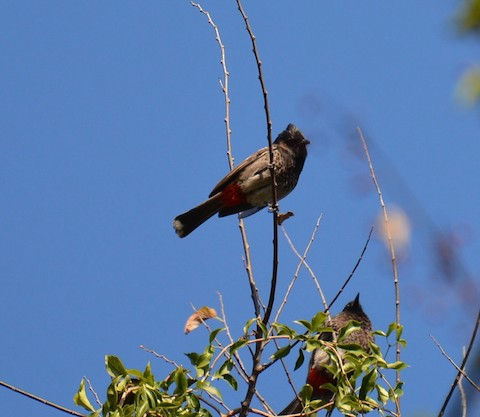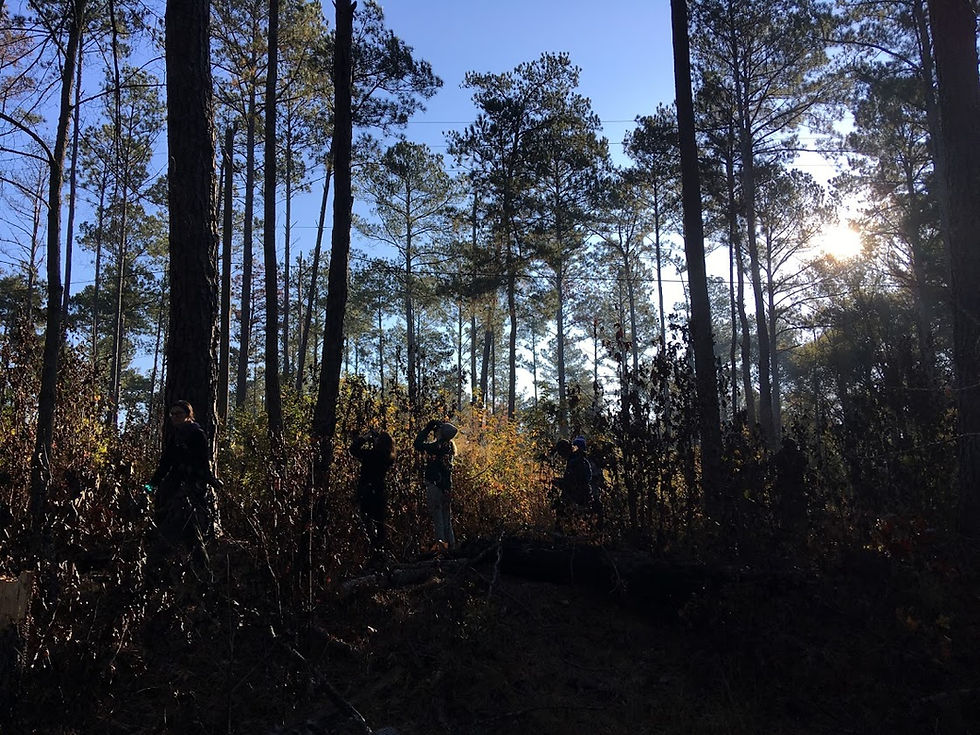Birding Along Lake Michigan
- pnkleinhenz
- Oct 1, 2019
- 4 min read
Heather and I both received scholarships to attend the National Audubon Convention, held in Milwaukee, Wisconsin this year. We packed our bags and hoped for a great conference and, as you probably know, new birds. Illinois and Wisconsin both contain birds we were relatively unlikely to find elsewhere and we knew that we had limited time to find them. So, like usual, we hit the ground running.
I landed into Chicago a few hours before Heather. I killed time by herping and birding at a wonderful tallgrass prairie remnant on the west side of Chicago. I happened upon a brown snake and my first Chicago garter snakes, but saw little in the way of birds. Still, it's always nice to see wildlife thriving in such a built-up part of the country.

As soon as I picked up Heather, we were off to birding locale number 1. This was to be the famous Montrose Point, a place famous for its migration birding but also famous as hosting the first breeding Piping Plovers in Chicago in decades. We planned to meet my friend, Caitie Streibig, there who volunteers with Lake-Cook Audubon and knows the spot as well as anyone.
Chicago traffic SUCKS, so it took us far longer to arrive then we had planned. Once we got there, however, our worries drifted away because the place was really cool. Native milkweeds and prairie plants indicated that restoration had been underway, and we noticed a huge, fenced-off area of beach. Clearly, that was where the Piping Plovers lived and, clearly, they were protected from disturbance.
Caitie joined us and we walked over to where a crowd of people with scopes were gathered. Sure enough, in front of us, were the little marshmallows with their Piping Plover parent nearby. These were our first for the year and, more than that, illustrated how wildlife can come back if given the chance. Those babies were so cute. They scooted around the mud flats, never too far from their parent (we only saw one adult), and looked like balls of cotton floating around if you weren't seeing them through the scope.
Strangely, a Willet was sharing the flats with them. Though Willet is common in our neck of the woods, seeing one in urban Chicago was almost shocking and most local birders were more excited about that than the plovers!
The three of us birded around the nearby uplands and, though we found many of the common birds of the area, we didn't see anything new. Still, Heather and I told Caitie to expect us back here during spring migration because the place seemed incredible. With that, we had to say goodbye to Caitie and be on our way. There was more to see.
Air Station Prairie was our next stop. This is a tiny, restored remnant of original tallgrass prairie north of Chicago. Supposedly, both Yellow-headed Blackbird and Virginia Rail had been seen there recently. The Virginia Rail, in particular, was supposed to be easy to see right by the visitor center. We arrived and, with the exception of a dead Yellow Warbler that had struck the visitor center window, didn't see much at all. Certainly no Virginia Rails were in sight. We did run into a dad with his two boys who took an interest in what Heather and I were doing. We told them about birds and snakes, and the boys told us about the snakes they had seen. Parents spending time with their kids in this way just warms our hearts and we were excited about a new batch of conservationists being raised.
We had time for one last stop before we drove to Milwaukee and met Heather's step-grandparents for dinner. Until the last minute, Heather and I really weren't sure where to go. Heather has those research skills, though, and found a place right of I-94. It was called Pine Dunes Forest Preserve and all we knew is that a couple species we needed were possible there. I can't say we expected much but, man, was this place a pleasant surprise.

Restored prairie stretched almost to the horizon on mounds of earth. In between the hills were marshy ponds, covered in native vegetation. Large oaks grew in scattered clumps of forest. In short, this place was absolutely gorgeous. We walked the whole 3 mile loop around the preserve, something we definitely did not have time for, and were wowed the entire time by the scenery. And we got a new bird! Near one marshy pond, we heard a very unusual call that we didn't recognize. On a hunch, we played the call of a Sedge Wren. Yep! That was it! We heard two more after that and, despite not getting a look at this skulky species, we did get a new bird that can be surprisingly tricky to find. Another pond, towards the end of our hike, hosted a pair of Trumpeter Swans. We had seen these but they always blow me away. One, they're gorgeous birds. Two, they are truly a conservation success story. The chances of seeing them in northern Illinois even fifty years ago was...zero.

Our first afternoon in the Midwest was a whirlwind, but we had a couple new birds to show for our efforts and were able to experience places and species that filled us both with optimism about the future.







Comments